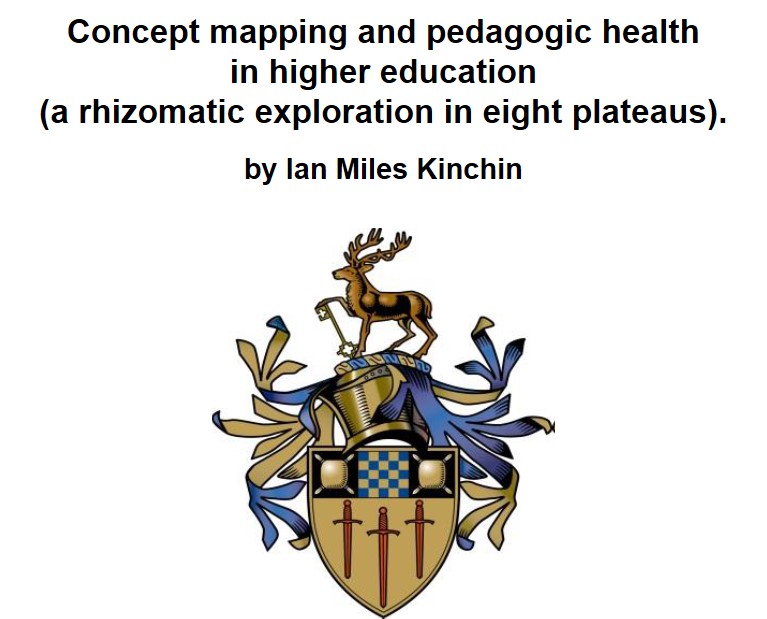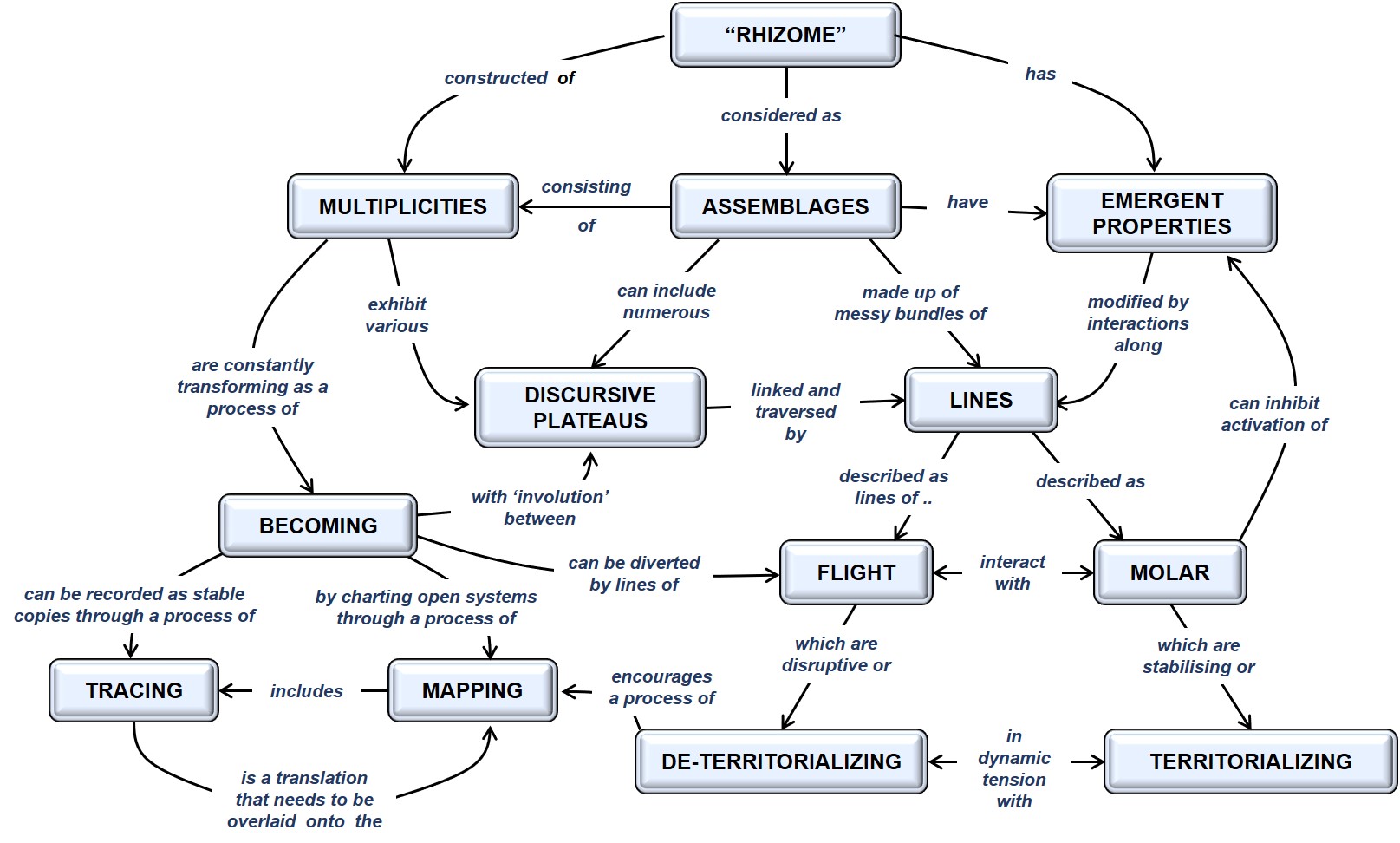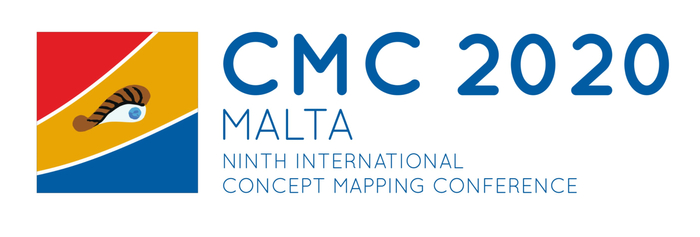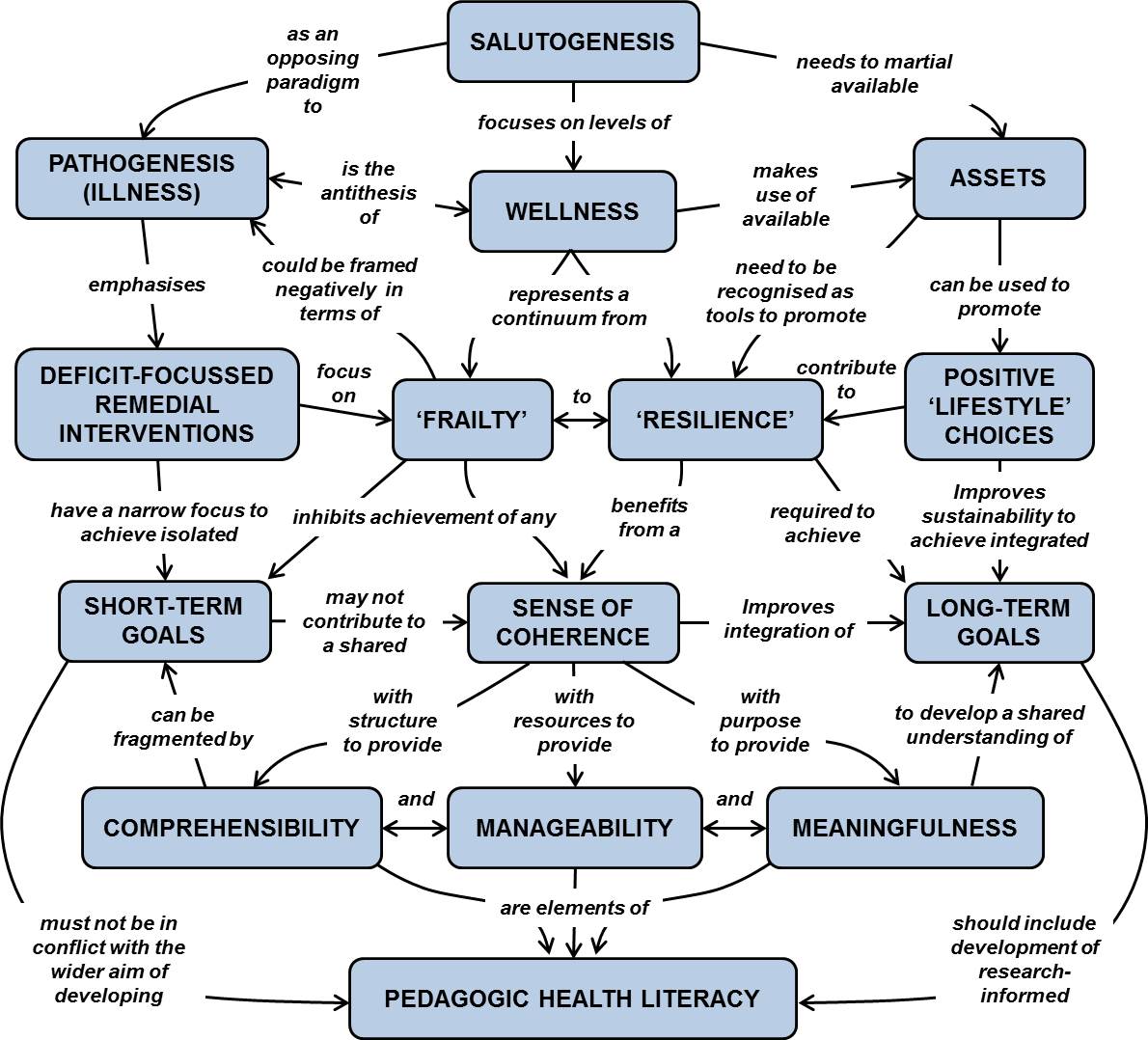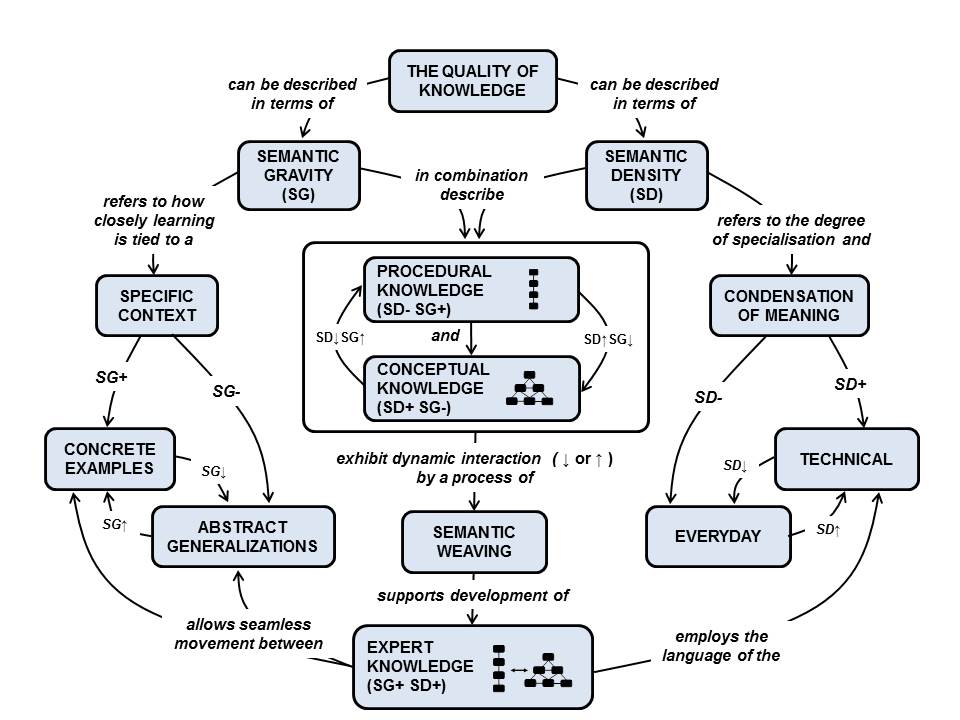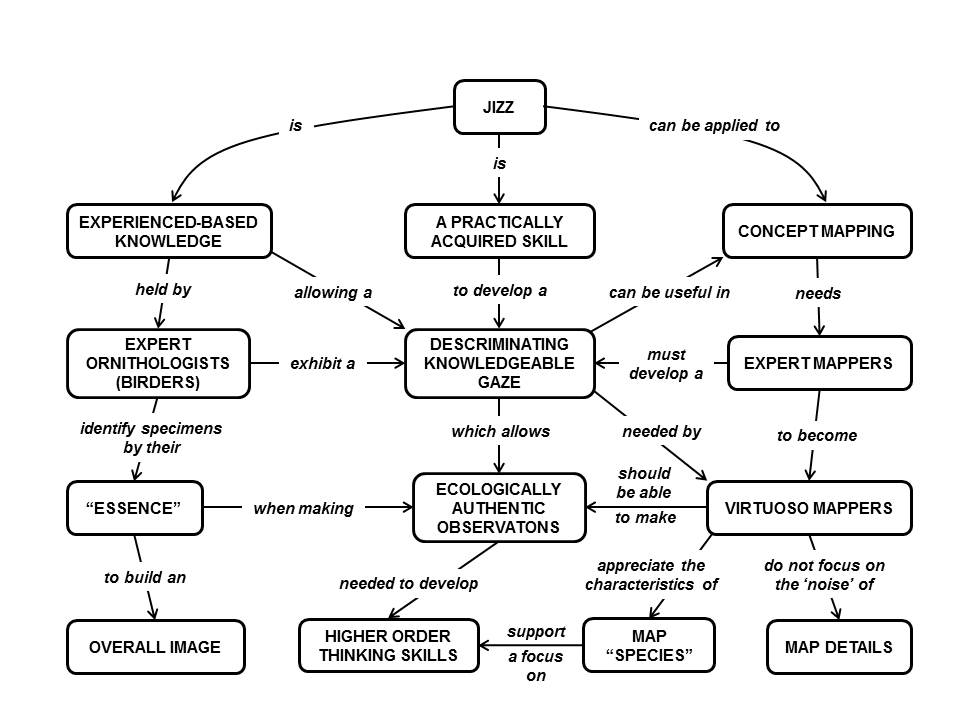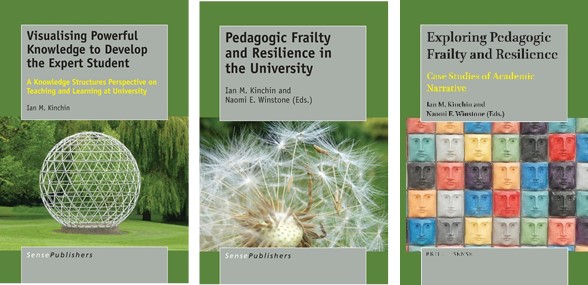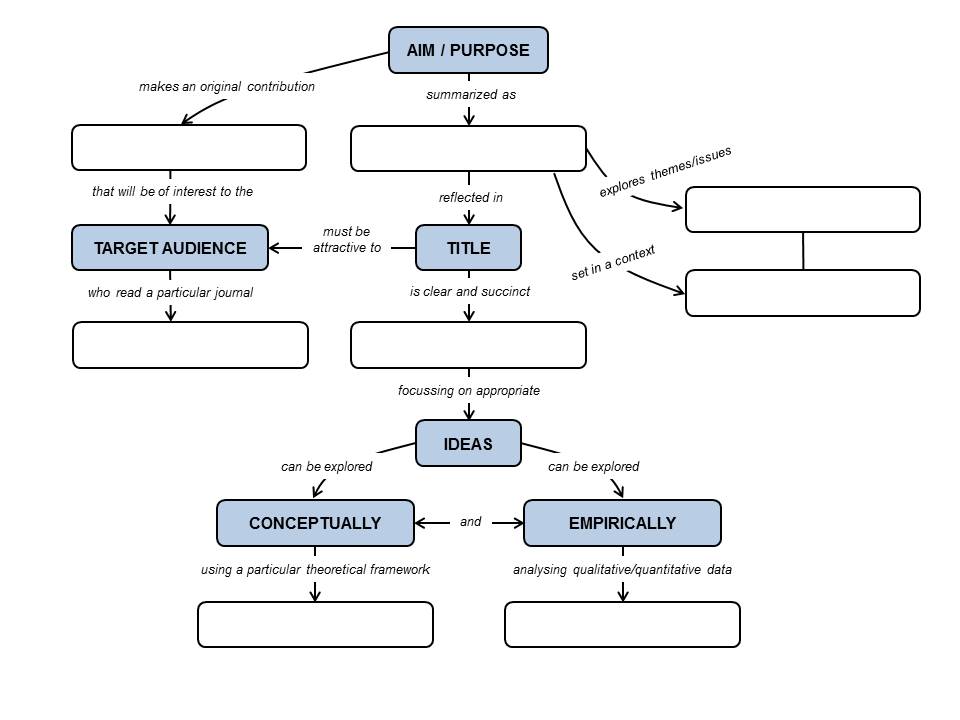There are some serious misconceptions in the literature on concept mapping that threaten to undermine the authenticity and potential of the tool.
When reading research papers on concept mapping, alarm bells are immediately triggered when the authors introduce their work with statements about “concept maps as a classroom strategy“. A concept map is not a teaching strategy any more than a blackboard or a textbook are teaching strategies. They are teaching tools that need to be embedded into a teaching strategy. So with the textbook, you could tell the class to go away and read the book, and come back in two weeks with any questions. Or you could sit and read through the book with the class. Or you could teach the class using all sorts of innovative classroom interventions and simply use the book for background reading. Three very different strategies using the same tool. It is the same with concept mapping. The teacher has to be clear how the tool is going to be used and how that will complement other learning activities.
Other generic and unqualified statements that can often be found include: “concept maps promote higher order thinking skills“. This statement is like saying that classes promoted higher order thinking skills. Excellent classes can promote higher order thinking skills, but poorly constructed and badly delivered classes will not. In the same way, poor use of concept maps will not promote higher order thinking skills. Some researchers seem to make the assumption that you can drop a quick concept mapping activity into any poorly constructed lesson and it will be miraculously converted into a high quality teaching episode. This is clearly nonsense. If the concept mapping activity does not complement the teaching environment and if the students have little idea why they are making a map, then the outcome is unlikely to be positive. The application if concept mapping needs to be planned and purposeful if it is to have a meaningful outcome.
So research papers need to be explicit about the nature of the concept mapping activity that has been undertaken with a class and the quality of the maps that have been used. We also need to know the details of how the maps were used. Some research papers simply state that students made maps and related to subsequent test scores. But making the map is not he end point. How were the maps used? What feedback was given and how was the map edited and refined so that the student engaged with the ideas represented? It is not always clear within the research literature what the students did after they were engaged in the concept mapping activity. How did they reflect upon their maps and how did they move forward to their next learning episode? Many papers refer to ‘an intervention’ and how the students did as a result of that intervention. But what were the wider gains? A group of students who may have ‘enhanced their learning in Biology’ might also be expected to take their new-found learning skills into their Chemistry lessons and their History lessons. But this is never reported as it is always outside of the scope of the intervention being tested. The focus is rarely the students, but usually the subject.
So how do we benefit from concept mapping activity and how do we record that benefit? What are the benefits to the teachers who are involved in these interventions? Do they reflect on their teaching practice as a result of the research and modify the ways they interact with the students?
Studies that aim to ‘isolate’ the effect of the concept mapping from any other factors, in a rigorous, controlled environment seem particularly poorly suited to enhancing classroom practice as they lack ecological authenticity. Concept mapping is part of the armoury of the teacher. It needs to be used alongside testing, feedback and collaborative reflection in order for it to be most effective. So we need more ‘messy research’ that recognises the complexity of the classroom. We need innovative qualitative methodologies and fewer randomised control trials. We need creative and imaginative research, and not formulaic experiments that will show that the ‘experimental group saw a slight advantage over a control group’. We need the research community to move forward and take some risks. Then we might see some progress. Just as the teaching risk-takers are the ones who will have the inspiring lessons.
It is time to be imaginative!

